Alocasias have many gorgeous, ornamental indoor plants, but Alocasia Jacklyn is the most beautiful large-leafed tuberous plant with profoundly lobed and arrow-shaped foliage. This striking beauty will light your environment with its vibrant green leaves and contrasting blackish-green veins. This specie of Alocasia is rare and is valued for its unique looks. Jacklyn is known as Tandurusa and is native to Southeast Asia, particularly Indonesia.
Allied Species: Alocasia Sarian, Alocasia Pink Dragon, Alocasia Lauterbachiana, Alocasia Silver Dragon, Alocasia Stingray, Alocasia Regal Shields, Alocasia Nebula, Alocasia Maharani, Alocasia Portora, Alocasia Cucullata, Alocasia Cuprea.
Related Products
Products | Name | Check Price |
Organic Perlite for Plants | ||
WONDER SOIL Organic | ||
Orchid Potting Bark Mulch |
Habitat & Ecology
Alocasia Jacklyn has been discovered recently and formally identified; previously, it was falsely identified as a mutation of Alocasia Portei or Nycteris. At first, it seems to be an ordinary plant, but if you look meticulously, you will notice that the leaves have fascinating purple lines. An Alocasia Jacklyn is for you if you want a houseplant with inimitable foliage and deep veins.
| Botanical Name: | Alocasia Jacklyn |
| Family Name: | Araceae |
| Common names: | Alocasia Sulawesi, Alocasia Tandurusa |
| Origin | Southeast Asia |
| Plant type: | Perennial |
| Humidity: | 60 %. |
| Temperature: | 65-80F |
| Light Need | Bright Indirect light |
| Soil | Well-draining, airy soil |
| Water | Water when top 2 inches of soil is dry |
| Pests | Mealybugs, scale, spider mites |
How to care for Alocasia Jacklyn?
This ornamental plant has its own uniqueness and is quite rare. Like other Alocasia plants, Jacklyn also prefers absorbent wet soil with decent drainage. The roots require a good amount of oxygen to prevent root rot. Jacklyn loves the humid environment and doesn’t like cold temperatures.
Keep reading the care guide below to know more about how you can grow this stunning plant at home.

Initial Care of Alocasia Tandurusa in Home
Alocasia Jacklyn is a rare plant and quite famous because of its striking beauty. It can be a great addition to your indoor plant collection. After bringing it home, you should first place it in bright indirect sunlight and provide high humidity. No doubt it’s a fast-growing aroid but also needs adequate care to nurture.
Don’t know how to take care of this exquisiteness, don’t worry, as we are here to guide you step by step.

Watering
Alocasia Jacklyn loves constant moist soil. However, adding too much water makes the soil soggy and causes plant damage as the roots are not resilient to moisture. Too much water may also turn the foliage yellow and soft. Similarly, please don’t allow the soil to dry out as the plant is not drought tolerant, and lack of water may harm its leaves. If the plant doesn’t receive enough water, its leaves turn brown or crisp.
That’s why balancing too much and too little water is imperative. Typically, Jaclyn needs water once a week, but you can water it twice a week in hot summers. In winter, it only desires water once in two weeks.
Fundamentally, it’s also not a good idea to rely on a watering schedule; alternatively, check the soil repeatedly to get an idea if the plant needs water or not. It’s recommended to test the soil before watering. If you find that the soil is moist or wet, don’t water it and wait for some days. Only add water when the top 2 inches of soil are dry. This way, you can avoid overwatering. In our experience using a moisture meter or sensor help you know when to water your plant .

Light Need
Alocasia Jacklyn is a tropical plant that stays happy in little sunlight. Indirect sunlight is more than enough for the plant, and ensure you keep it indoors most of the time for its healthy growth.
But sunlight is also vital for it as, without adequate light, it won’t be able to grow effectually. You can keep the plant outdoors during the summers, but it’s not a good idea to keep it outside during the night because the low temperature at night may cause damage to this tropical resident.
Proper indirect sunlight is essential for the plant’s leaves to maintain color. The leaves’ color will determine how much light the plant requires, but never expose it to direct sunlight, or its leaves will scorch.
For darker spots in my house I use grow light to provide my plants the required light for them to grow to their full potential.

Humidity and Temperature Requirements:
The plant loves the warm and humid environment because of its tropical rainforest Indonesian origin. Always keep Alocasia Jacklyn above 12 degrees Celsius to evade any damage to it. That being said, the humidity around the plant should be plentiful. The plant flourishes well in an environment with at least 60% humidity.
If you feel that the humidity levels are low, keep a humidifier or Pebbles tray near the plant, as it will love it. For its healthy growth, place Jacklyn near a window with ample indirect light and airflow. You can also use a hygrometer to monitor the temperature and humidity.
Like other Alocasia plants, Jacklyn is also sensitive to cold conditions. The minimum temperature required by the plant to stay alive is 15 degrees Celsius. However, the ideal temperature is around 17 to 22 degrees Celsius.
Being a caring plant parent, aim to provide suitable temperature to the plant for its fast growth and long life. If the room temperature drops below 15 degrees, keep the plant near the heater so that it can receive the required warmth but don’t forget to place the humidifier near that area to avoid dry air.

Soil Requirements:
The Alocasia Jacklyn requires rickety soil that can stay moist and has good drainage. We know that these traits contradict each other since drainage is the complete opposite of moist. It means that the soil will remain moist when you water it because it will swiftly drain the surplus water.
However, it will still hold some water and clear out the rest of the water quite quickly. By doing this, your plant’s roots will get the moisture they need and do not end up sitting in excess water as the surplus water causes swamping and waterlogging.
If roots get excessive water, they will douse or float in the liquid since the soil is damp. This dampness or flood of water halts oxygen from getting into roots since it blocks tiny pairs of pockets. This is how the root rot transpires. On the other hand, too much air means the soil is dry; again, it’s bad for Alocasia Jacklyn as it will dehydrate because of a lack of water. Dehydration will result in leaves wilting.
But how to achieve soil that has good drainage and remains moist? Luckily, you can get this type of soil; in fact, you can make it at your home. All you want are three ingredients to combine to prepare a soil mix.
- One part is Potting soil.
- One-part Perlite. You can replace pumice with Perlite for more efficient results.
- And one part peat moss. You can use Coco coir instead of peat moss if you want something more eco-friendly.
- Add some Horticultural charcoal.

Repotting:
Alocasia Jacklyn is a fast grower. That’s why it needs repotting every after 12 to 18 months. But you don’t necessarily follow this schedule; you can report the plants when needed.
When you see the roots bulging out of the pot, it’s time for repotting, but remember that Jacklyn doesn’t like being moved and can cause strain and shudder. So, repot the plant only when it’s an emergency.
The new container should be larger than the previous one for repotting, approximately 2 inches bigger than the current pot. However, be cautious with the container size as too big a pot may result in overwatering. The best time to repot is spring or early summers, don’t forget to use fresh soil for the new pot.

Fertilizer
Alocasia Jacklyn needs a fertilizer of a balanced mix of 20 (nitrogen), 20 (phosphorous), and 20 (potassium). This mixture will give your plant sufficient nutrients to grow. We suggest using plant fertilizer instead of chemical one to avoid damage to your plant.
Slow-release fertilizers are recommended to ensure that the plant receives enough nutrients and has not overdosed. Customizing fertilizer according to your plant’s unique characteristics is always better. If your Alocasia Jacklyn is placed in a relatively dark area, it will need more fertilization.

Propagation of Alocasia Tandurusa:
Alocasias are easy to propagate and can be a convenient gift for your loved ones. That’s the main reason that plant owners love all Alocasias, and Jacklyn is no different.
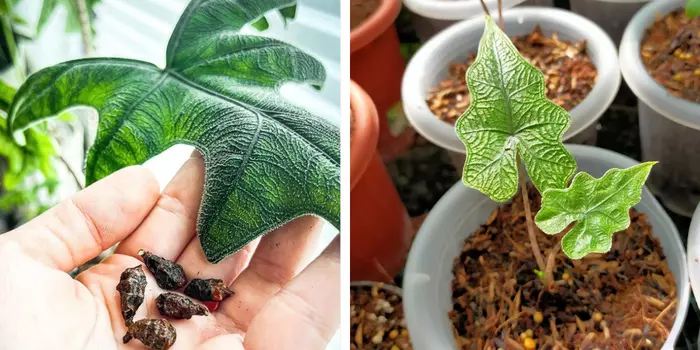
Propagation is the process of cutting a piece of Alocasia Jacklyn and growing it in another flask as a new plant. There are various ways to propagate this lush beauty, such as propagation by soil and by water. We will guide you through all the propagation methods below.
Propagation in Water
If you have stem cuttings, the water propagation method is the best for your plant. For best results, the cuttings should be one to two inches long and have at least one to two leaves along with stalks.
Additionally, take a glass container and fill it with tap water. Keep the water for 24 hours to let the chlorine sit to avoid a destructive impact on the plant. After that, place the cuttings in the glass of water and cover it with a plastic bag or cling wrap. If you notice the humidity isn’t enough, you can use the spray to increase it.
Propagation in Soil
According to experts, the best way to propagate Jacklyn in the soil is through rhizomes or tubers, but you can also propagate Alocasia Jacklyn in soil with stem cutting.
For soil propagation, take the plant and lay it on the ground. You will notice that plant has different clumps. Grasp those clumps with their rhizomes. These are like your propagation seeds.
Insert those clumps into a pot that is filled with soil. Make sure you use suitable soil with enough moisture, a virtuous drainage hole, and a bit of nutrients like coconut coir. This soil combination will encourage the plant to thrive.
The process takes some weeks, and keep the plant moist until it displays roots. After that, the plant is ready to be moved to an enormous container.
Corm Propagation
Alocasia Jacklyn can also be propagated through corms. Firstly you need to pluck the firm corms from the roots of the Jacklyn or find the corms in the potting mix. Scrape off the outer brown coat of each corm to speed up the rooting.
Later you can root the corms in your preferred medium, such as water, leca, or sphagnum moss. This will let you figure out which side of the corm goes upward. Moreover, at this stage the corms doesn’t need any bright indirect light; therefore rooting them in closed containers would be just fine. Once it produces roots and a sprout, transplant the corms in separate containers into the potting mix.

Maintenance:
Maintenance of Alocasia Jaclyn is simple, and it only needs frequent pruning because of the fast-growing nature of the plant. Regular trimming is necessary to keep it from becoming too large as it won’t look appealing. Spring, the active growth season, is the best time to trim the plant.
We recommend cleaning the plant and its pot once a week and removing all dead and tarnished leaves as needed. Cleaning and trimming allow growth and improves the appearance of Jacklyn

Toxicity
Like all other Alocasias, Jacklyn has crystals of calcium oxalate that are toxic to humans and pets. Jacklyn should never be swallowed as it can cause dermatitis in humans. Therefore, we recommend using gloves when pruning, propagation, or repotting.
This plant could be fatal for pets, and the pet should never consume it. Contact the vet immediately if you doubt your pet has consumed Alocasia Jacklyn.

Common Problems and Pests
Most communal issues Alocasia Jacklyn may face are;
Leaves are turning yellow: This is the most common problem this delicate plant may have. The leaves turn yellow because of overwatering or underwatering. If you notice the problem, immediately start the treatment.
Leaves are turning brown: This issue is caused by the lack of sunlight. However, cold weather and lack of water may also cause this problem. If your leafy friend’s leaves turn brown, ensure it gets adequate sunlight and temperature.
Diseases
Typical diseases of Jacklyn are root rot and leaf infections.
Root Rot: It’s a severe disease that can destroy your plant. To avoid root rot:
- Use well-draining soil with all the necessary nutrients.
- Don’t overwater the plant.
- Let the soil completely dry between waterings.
Leaf Infection: Too much moisture on the leaves causes the infection. Don’t let the leaves wet, and avoid watering the plant late in the day as moisture won’t get dry and may result in leaf infection.
Pests
This gorgeous and gentle plant is an easy target for pests. Mealybugs, spider mites, and aphids are the most common pests attacking Alocasia Jacklyn.
These tiny insects must be spotted early and gotten rid of as they can cause significant damage to the plant.
When you spot any pest, wash them off with a garden hose or shower head using a gentle stream. Repeat the process twice to four times daily for a couple of days to eliminate the bugs.
For pest prevention, regular inspection is necessary.
FAQs
Is Alocasia Jacklyn a rare tropical plant?
It is a newly discovered plant, and that’s why it’s very erratic. This is a beautiful plant with striking green leaves and dark veins.
How to grow Alocasia Jacklyn?
To grow the plant faster, keep it in indirect sunlight near a window or any area with proper air circulation. Also, use well-aerated and well-draining soil. Also, to guarantee healthy growth, don’t overwater the plant.
How big do leaves of Alocasia Jacklyn grow?
Alocasia Jacklyn is an excellent addition to your living space, as when its size grows, it becomes stunningly gorgeous. The leaves of Jacklyn may grow up to 80cm in length.
Final Words
Alocasia Jacklyn is a great addition to your indoor plants. With its dark green leaves and strappy stems, this plant will make your home an attractive place.
Jacklyn is a fast grower but also needs your care and attention. And how to take care of this subtle beauty? This article has explained it all.
Happy Gardening!!
Related Posts
Calathea Vittata Elliptica Care Guide
Calathea Vittata Elliptica requires medium care, grows up to two feet and has leaves stretching outwards with a beautiful glossy green glow.
Calathea Leopardina | Calathea Concinna Care Guide
With little care Calathea Leopardina or Calathea Concinna grows marvelous bright green shovel-shaped leaves with spotted leopard skin pattern.
Calathea Makoyana | Peacock Plant Care Guide
Calathea Makoyana, also renowned as the Peacock plant, with little care produces gorgeous foliage with contrasting shades of green and purple.
Calathea Crocata ‘Tassmania’ | Eternal Flame Plant Care Guide
Calathea Crocata is an evergreen tropical plant with stunning, flaming hot, orange-yellow flowers, making it famous as Eternal Flame Plant.
Calathea Warscewiczii | Jungle Velvet Calathea Care Guide
Calathea Warscewiczii known as Jungle Velvet Calathea is a flowering tropical plant with velvety two-toned leaves and cream colored flowers.

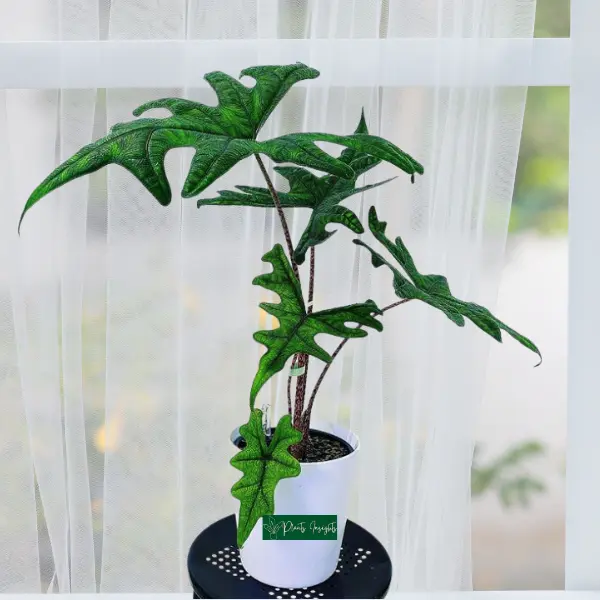
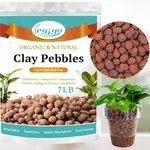
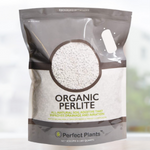

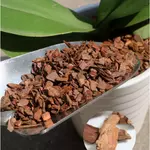
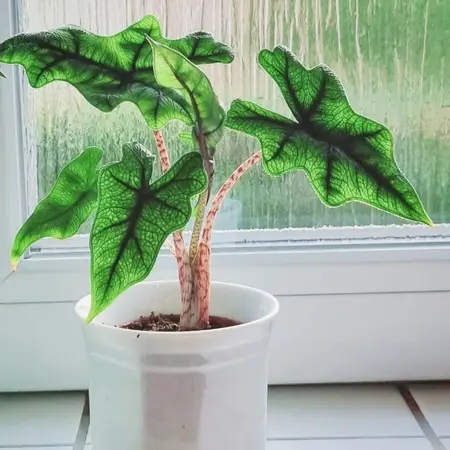
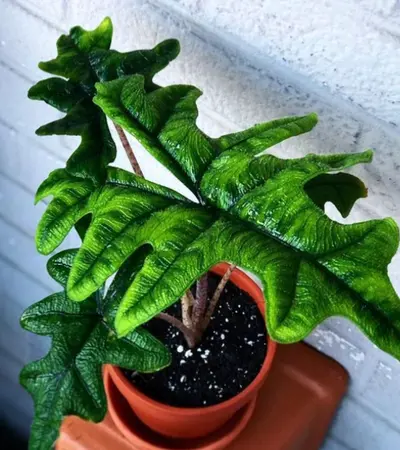

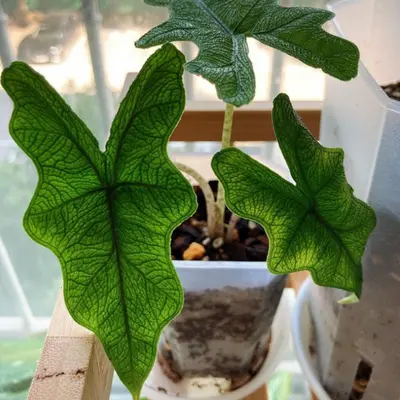
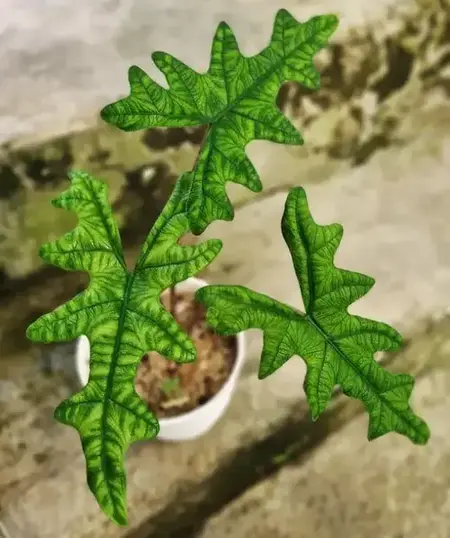
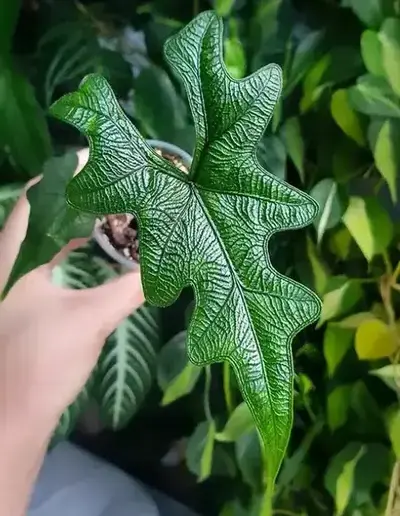
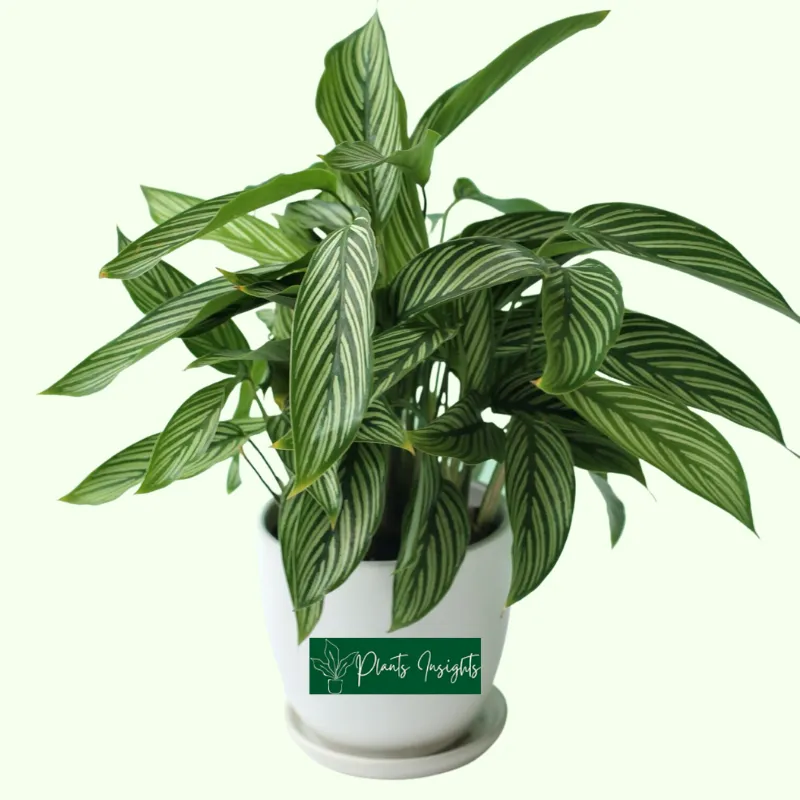

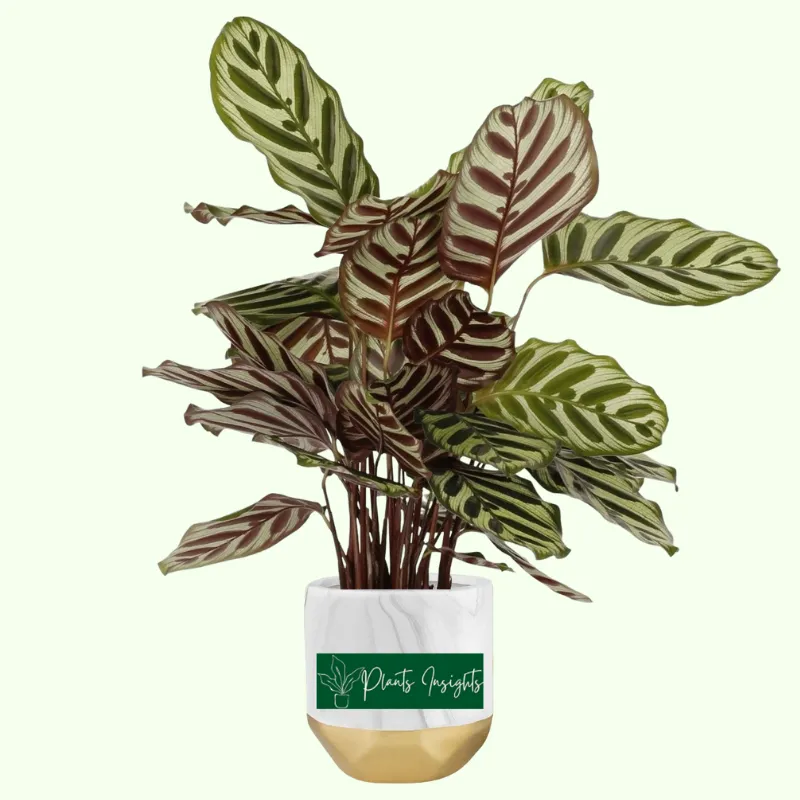

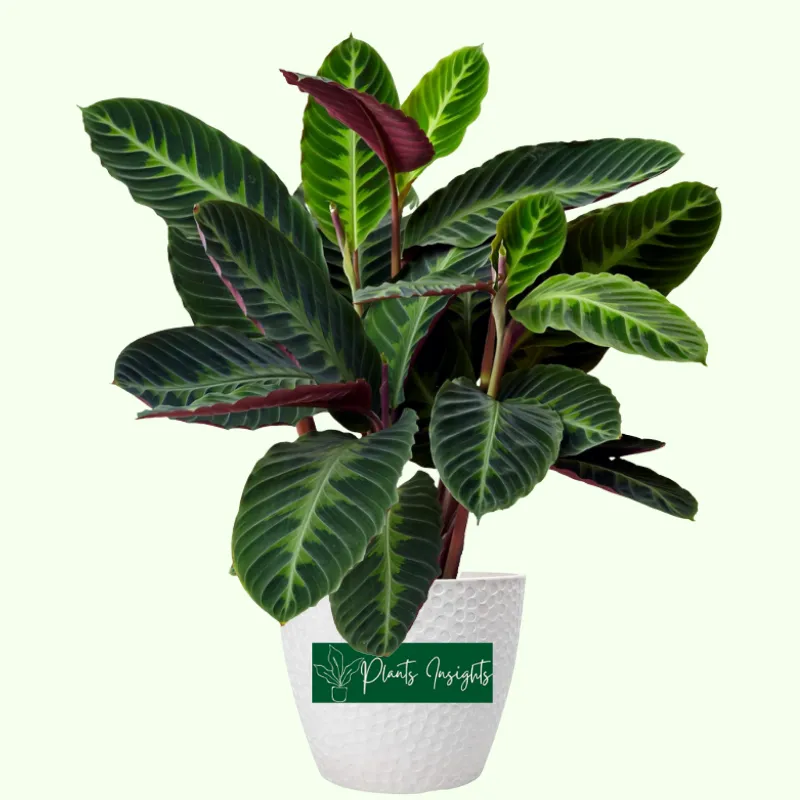
What is “misty” soil?
Thanks for sharing.
It was a mistake and moist was the correct word. Correction has been made. Thanks for highlighting.
Would orchid pots with holes along the sides work well for A. tandurusa?
Thank you very much!
I haven’t tried a pot with side holes for my Alocasias, however theoretically speaking it should work fine as Alocasias prefer more air flow through soil.
Spot on with this write-up, I actually assume this web site wants much more consideration. I’ll probably be again to learn way more, thanks for that info.